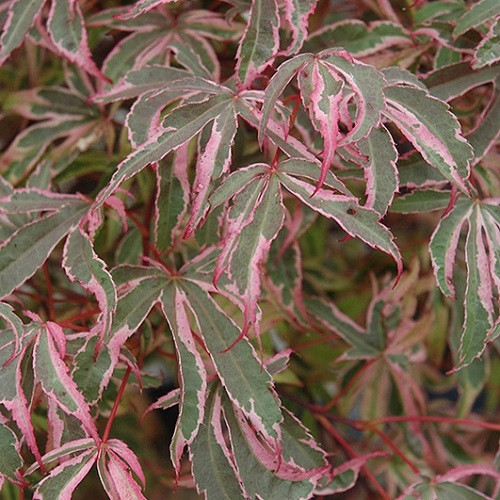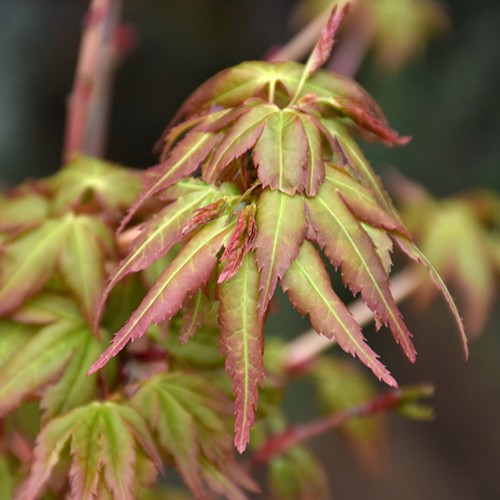| Acer palmatum var. dissectum 'Tamukeyama' | USDA Zone: 5-8 |
Tamukeyama Japanese Maple has attractive burgundy foliage which emerges crimson in spring. The deeply cut ferny palmate leaves are highly ornamental and turn an outstanding red in the fall. It features subtle corymbs of red flowers rising above the foliage in mid spring before the leaves. It produces red samaras from early to mid fall. The rough gray bark and red branches add an interesting dimension to the landscape.
Tamukeyama Japanese Maple is recommended for the following landscape applications;
- Accent
- Mass Planting
- Hedges/Screening
- General Garden Use
- Container Planting
Stunning Foliage Color
Weeping Habit
Common Name: Japanese Maple, Weeping Japanese Maple
|
Key Feature
|
Light Needs | Landscape Uses |
 |
 |
|
|
|
|
| More About Tamukeyama Japanese Maple |
| Height: 6-7 ft |
Spread: 8-10 ft |
|
Tamukeyama Japanese Maple does best in full sun to partial shade. It prefers to grow in average to moist conditions, and shouldn't be allowed to dry out. It is not particular as to soil pH, but grows best in rich soils. It is somewhat tolerant of urban pollution, and will benefit from being planted in a relatively sheltered location. Consider applying a thick mulch around the root zone in winter to protect it in exposed locations. Tamukeyama Japanese Maple makes a fine choice for the outdoor landscape, but it is also well-suited for use in outdoor pots and containers. Because of its height, it is often used as a 'thriller' in the 'spiller-thriller-filler' container combination; plant it near the center of the pot, surrounded by smaller plants and those that spill over the edges. It is even sizeable enough that it can be grown alone in a suitable container. Note that when grown in a container, it may not perform exactly as indicated on the tag - this is to be expected. Also note that when growing plants in outdoor containers and baskets, they may require more frequent waterings than they would in the yard or garden. Be aware that in our climate, most plants cannot be expected to survive the winter if left in containers outdoors, and this plant is no exception. NOTE: Some flowers and plants may be harmful or poisonous to people or pets if touched or ingested. If you require more information before placing an order, please let us know in advance. |










